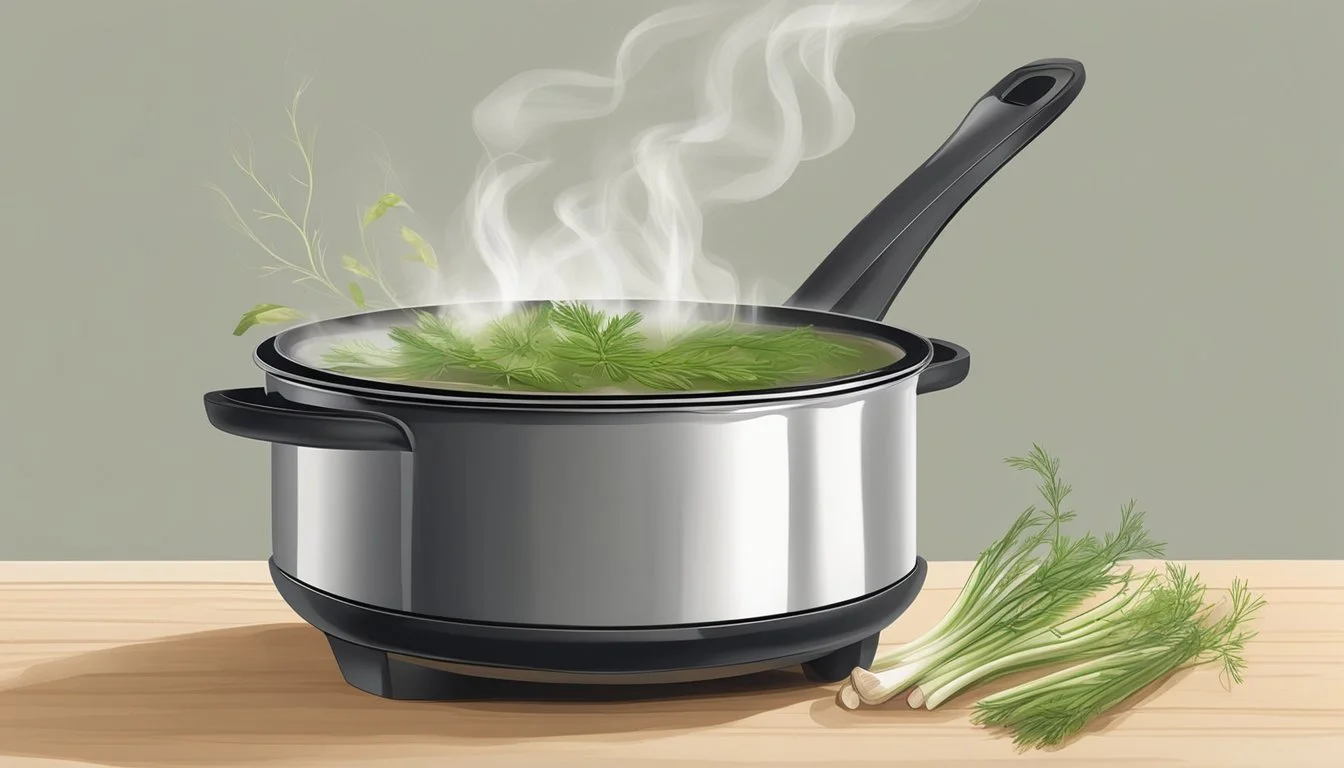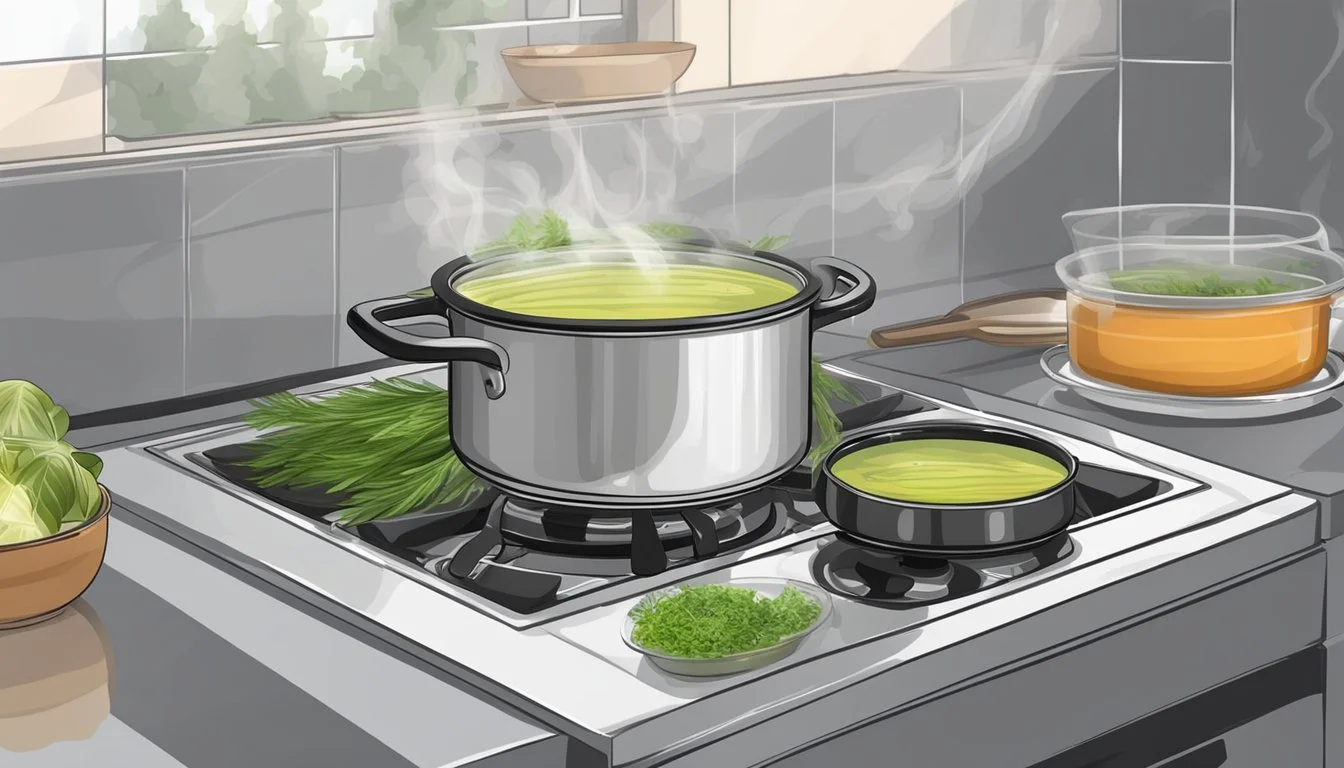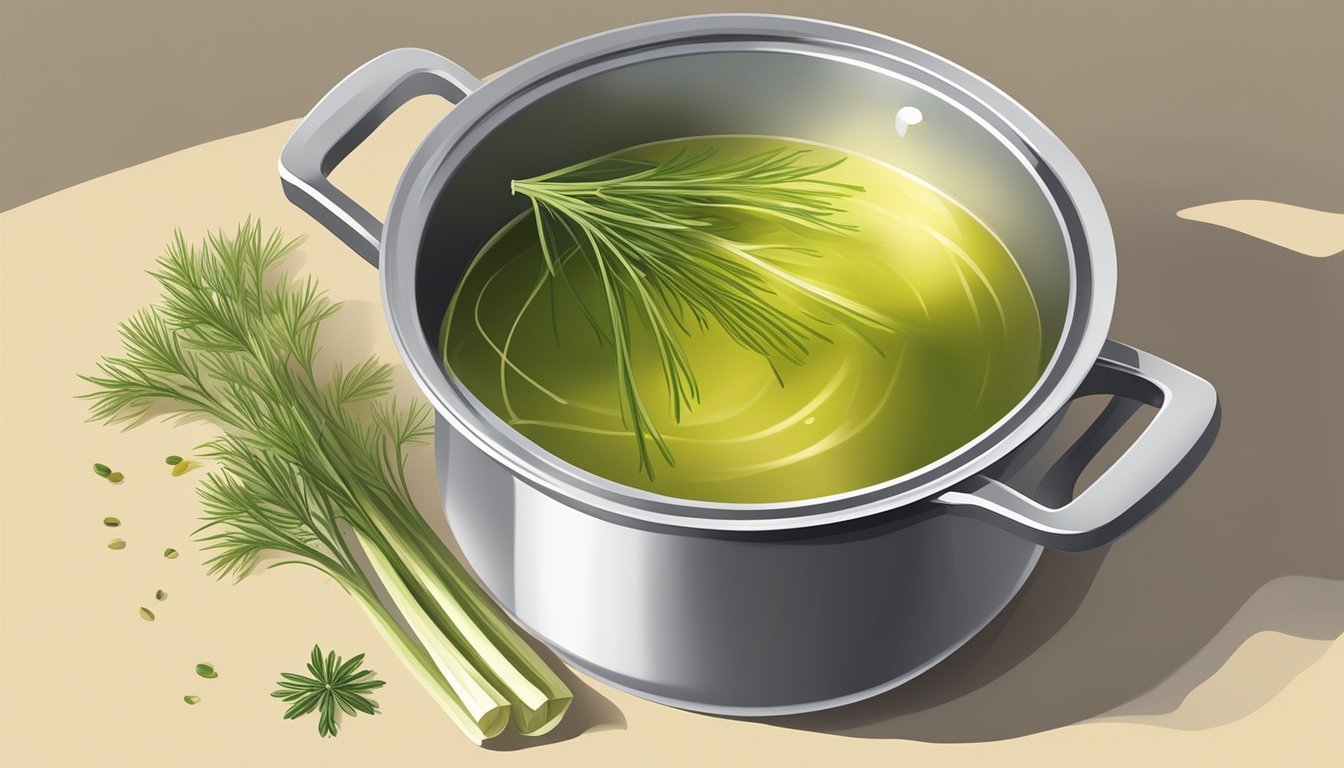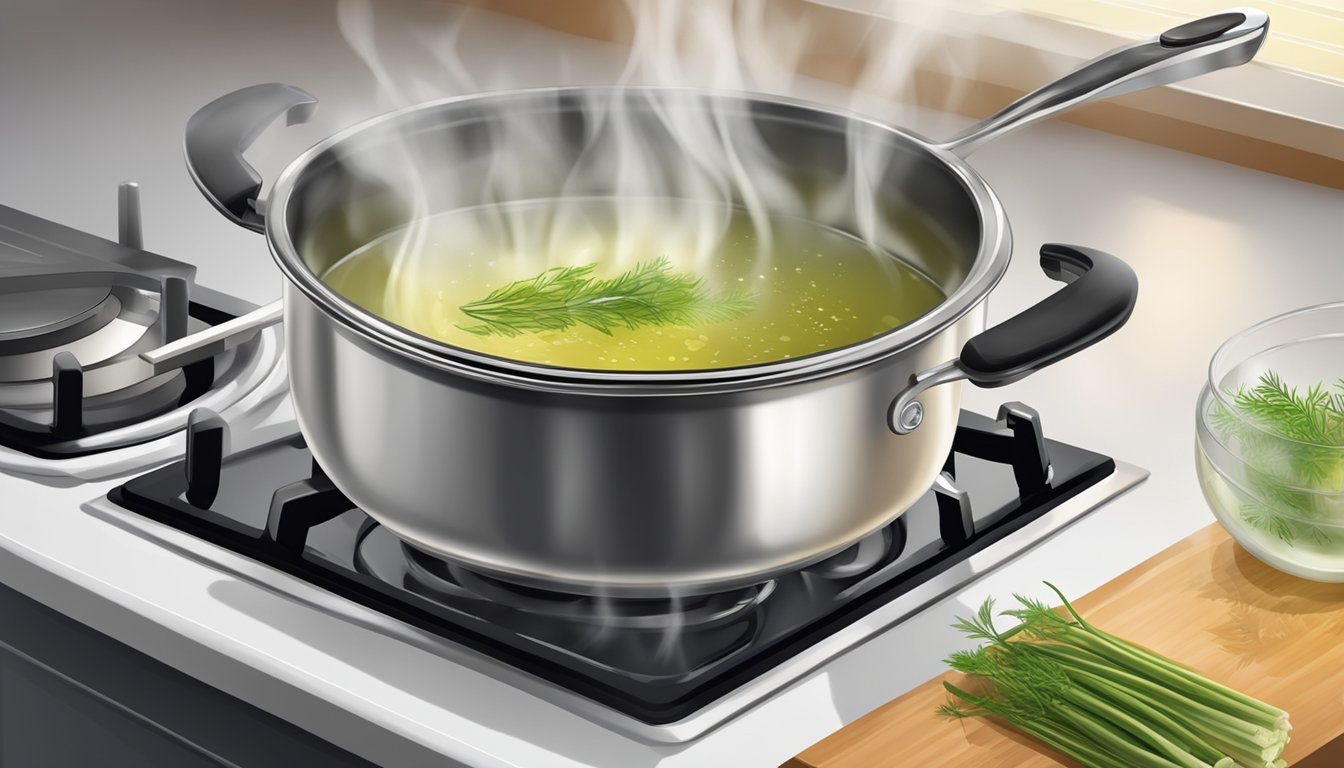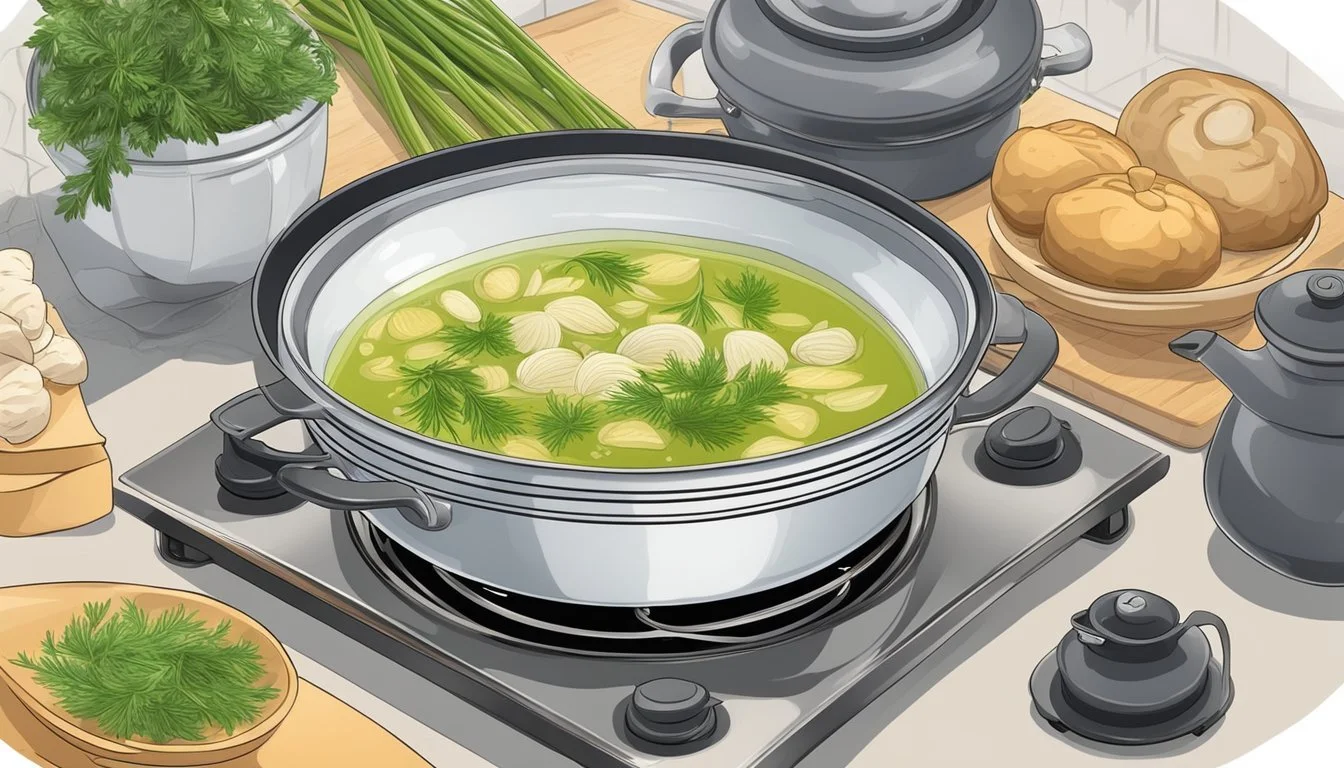Fennel Stalk Soup
Uncover the Secret to a Perfect Anise-Infused Appetizer
Fennel stalk soup, with its distinctive anise flavor, is a delightful starter that brings both aroma and taste to the forefront of a culinary experience. This aromatic soup utilizes the often-overlooked fennel stalks, transforming what might be discarded into a star ingredient. Fennel's natural licorice-like flavor imparts a unique character to dishes, and when simmered into a soup, it releases a fragrant scent and creates a warm and inviting essence perfect for any setting.
What sets fennel stalk soup apart is its ability to balance flavor with health benefits. Fennel itself is rich in vitamins and minerals, and its use in soups (What wine goes well with soups?) contributes to a nutritious profile that is both satisfying and beneficial. The preparation of this soup often involves sautéing the fennel until caramelized, unlocking deeper flavors, followed by a simmering process that melds it with broth and other fresh ingredients.
The versatility of fennel stalk soup is notable—it can be enjoyed as a light and brothy appetizer or transformed into a more indulgent, creamy offering with the addition of ingredients like beans or heavy cream. It adapts well to various cooking methods, whether it’s a slow-cooked melding of flavors or a quick blend for those on a tighter schedule. This soup becomes a canvas for cooks to showcase the understated elegance of fennel while offering a comforting and hearty dish to diners.
Understanding Fennel
Fennel stands out as a unique vegetable that offers a distinct anise flavor, rich nutritional value, and versatility in cooking. This section provides insights into what fennel is, its health benefits, different types available, and tips for buying, storing, and preparing it for use in dishes.
What Is Fennel
Fennel is a flowering plant species in the carrot family, native to the Mediterranean. It is known for its crisp bulb and feathery leaves, which are used for their aromatic and culinary properties. The vegetable is often recognized for its anise-like flavor, which can add a fresh, licorice taste to a variety of dishes.
Nutritional Profile
Fennel is highly esteemed for its dietary fiber and is a good source of vitamin C, important for immune function, and skin health. It also provides an array of minerals such as potassium, manganese, and calcium, contributing to a balanced diet.
Nutrient Importance Fiber Aids digestion Vitamin C Supports immune system Potassium Regulates blood pressure Manganese Supports bone health Calcium Essential for bones and teeth
Varieties of Fennel
There are different types of fennel, including:
Florence fennel or finocchio, which is the bulbous variety commonly used in cooking.
Common fennel, which does not form much of a bulb and is often used for its seeds and fronds.
Baby fennel, which is a smaller version of the bulb variety, known for its tender texture and more delicate flavor.
Buying and Storing Tips
When buying fennel, one should look for firm, bright green bulbs without bruising or browning. Freshness is indicated by crisp, tight stalks and feathery, green fronds. Fennel should be stored in the refrigerator wrapped in a plastic bag, and it typically lasts for about a week. Proper storage ensures that fennel retains its flavor and nutritional properties.
Prepping Fennel for Cooking
To prepare fennel for cooking, one should wash the bulb thoroughly to remove any dirt or grit. The stalks are cut away from the bulb and can be reserved for making stocks or adding to compost. The hard heart of the bulb should be removed, and the bulb can then be sliced as desired. Fennel can be sautéed, braised, roasted, or eaten raw in salads, depending on the recipe and desired texture.
Fundamentals of Fennel Stalk Soup
Fennel stalk soup harnesses the aromatic anise essence of the fennel plant, crafting a uniquely fragrant and flavorful starter. This section outlines the core components and steps to create this soothing soup.
Ingredient Overview
The foundational ingredients for fennel stalk soup include:
Fennel stalks: The star of the soup, offering a sweet, anise-flavored base.
Onion: Enhances the depth of the soup with its savory notes.
Garlic: A touch of garlic adds complexity to the flavor profile.
Vegetable broth: Water can be used, but vegetable broth provides a richer taste.
Olive oil: A preferred fat for sautéing, lending a subtle fruitiness.
Lemon: Adds a fresh, acidic balance to the sweet fennel.
Salt and pepper: Essential for seasoning, fine-tuning the soup’s flavor.
Creating the Soup Base
To begin, sauté diced onions and minced garlic in olive oil until translucent. Then, add chopped fennel stalks, allowing them to soften and release their aromatic compounds. Pour in vegetable broth to submerge the ingredients, creating a well-rounded base with a balance of vegetable sweetness and savory notes.
Seasoning and Flavor Balance
For optimal seasoning:
Sprinkle salt conservatively throughout cooking, adjusting to taste.
Cracked pepper introduces a warming spice that complements the anise flavor.
A few squeezes of lemon juice toward the end brighten the soup and provide a crisp finish.
The harmony of season and flavor is critical. Taste regularly and adjust the seasonings to maintain a clear, balanced profile that exemplifies the essence of the fennel.
Soup Enhancements
To elevate the humble fennel stalk soup into a sophisticated and hearty dish, chefs typically focus on incorporating additional vegetables, enriching the soup with proteins, and finishing with creative toppings.
Incorporating Vegetables
Introducing a variety of vegetables not only adds layers of flavor but also enhances the nutritional profile of the soup. Carrots and leeks impart a natural sweetness that complements the anise flavor of fennel. Celery can be added for a celery-like texture and freshness. For a heartier option, chefs might include potatoes or beans, such as cannellini beans, for added thickness and creaminess.
Vegetable Suggestions:
Carrot: Adds sweetness and color.
Celery: Provides a pleasant crunch and freshness.
Leeks/Shallots: Offer a mild onion-like flavor.
Potatoes/Beans: Increase heartiness and thickness.
Addition of Proteins
Protein incorporation can transform fennel stalk soup from a starter to a main course. For a vegetarian twist, quinoa or peas provide protein content while maintaining the soup’s lightness. In non-vegetarian versions, pieces of chicken or shreds of cooked chicken breast can be used, enhancing the depth of flavor, especially when paired with a rich chicken stock.
Protein Additions:
Quinoa/Peas: Vegetarian protein sources.
Chicken: Works well with chicken stock for a fuller flavor.
Beans: Cannellini beans are a great vegetarian protein that adds creaminess.
Topping Options
Toppings are a key final touch that adds texture and visual appeal. A sprinkle of chopped parsley or fennel leaves offers a fresh, vibrant contrast to the creamy soup. For an extra layer of complexity, one could consider a drizzle of an anise-flavored liqueur or olive oil for a subtle hint of additional flavor.
Topping Ideas:
Herbs: Parsley or fennel leaves for freshness.
Oil: A dash of olive oil or an anise-flavored liqueur for complexity.
Fennel Soup Variations
Fennel soup's versatility allows for numerous variations that cater to different culinary traditions, dietary needs, and seasonal flavors. Cooks can integrate local ingredients, adapt the dish for dietary restrictions, or highlight the changing produce of the year.
Cultural Twists
Incorporating regional flavors into fennel soup recipes can transform this simple dish into a cultural staple. Mediterranean fennel soup might feature a blend of leeks and tomatoes, drizzled with olive oil and sprinkled with parmesan cheese. Adding Italian sausage, a hearty favorite, can create a richer dish, while for a Greek twist, one might include kalamata olives and feta. In regions where anise-flavored dishes are common, fennel is extensively used in salads, braised and roasted preparations, especially during festive times like Easter.
Dietary Adaptations
Fennel soup can be easily adapted to fit various dietary requirements. For vegan and vegetarian adaptations, cooks might replace traditional stocks with vegetable broth and eliminate any meat-based ingredients. Gluten-free versions often forego pasta or employ gluten-free alternatives. Incorporating cream or a dairy substitute can transform a brothy soup into a creamy delight for those seeking lactose-free options. A simple recipe might involve sautéed fennel that is simmered with broth and blended until smooth, seasoned with black pepper and salt, and trimmed with fresh herbs.
Seasonal Adaptations
Fennel can be emphasized in soup to reflect fall and winter flavors or made into a refreshing treat for warmer months. A fall fennel variety might feature roasted fennel paired with other root vegetables, enhanced by spices such as nutmeg or cinnamon. In contrast, a summer variation could be lighter, showcasing chopped fennel along with seasonal vegetables, garnished with fresh dill or basil for a refreshing touch. Adjusting the soup's temperature or thickness helps it fit the seasonal context, with chilled soups being particularly refreshing during the summer and thicker, heftier versions providing warmth in the colder months.
Serving and Pairing Suggestions
When serving fennel stalk soup, the right accompaniments can enhance its unique anise flavor. Consider texture and balance in your side dishes and take the opportunity to pair the soup with complementing beverages and bread.
Compatible Side Dishes
For a harmonious blend of flavors, integrate side dishes that resonate with the light and aromatic nature of fennel stalk soup. The following salads offer a crunchy contrast and can be easily prepared:
Jícama and Fennel Salad: A refreshing combination that pairs the crispness of jícama with the subtle licorice notes of fennel.
Quinoa and Fennel Salad: This hearty option brings together protein-rich quinoa and crunchy fennel; a suitable choice for a summer lunch.
Roasted Beet and Fennel Salad: Earthy beets and fennel create a vibrant and nutritious pairing, excellent for a Thanksgiving starter.
Citrus Salad with Fennel and Avocado: The acidity of citrus cuts through the soup’s richness, while avocado adds creaminess.
For more substantial side dishes:
Roasted Vegan Sausage with Fennel and Polenta: A savory dish that complements the soup's anise flavor while adding robustness to the meal.
Sautéed Fennel with Leeks and Mushrooms: This easy to make side features fennel in a different context, alongside aromatic leeks and umami-rich mushrooms.
Wine and Bread Pairings
To complete the dining experience, consider these bread and wine options:
Bread: Serve with crusty, artisanal bread or a soft, herbed focaccia drizzled in olive oil. The choice of bread can be used to sop up the soup or as a palate cleanser between sips.
Wine: A glass of crisp, dry white wine complements the fennel's anise flavor. Opt for varieties such as:
Sauvignon Blanc: Offers grassy notes that match well with the soup's herbal character.
Pinot Grigio: A lighter option that won't overpower the soup's delicate flavor.
Chardonnay: When lightly oaked, provides a buttery roundness that can echo any creaminess in the soup.
Remember, the key is to respect the fennel stalk soup's fragrant profile, whether it's a casual summer gathering or an elegant Thanksgiving dinner.
Storage and Reheating Tips
Proper storage and reheating methods ensure that the unique anise flavor of Fennel Stalk Soup is preserved. These tips will help maintain the soup’s quality and make for an easy, enjoyable experience when it’s time to savor the leftovers.
Preserving Leftovers
To store leftovers, one should cool the Fennel Stalk Soup to room temperature before refrigerating. Storage is best in an airtight container to prevent the absorption of other flavors from the refrigerator. Leftovers may last up to 3-4 days when stored appropriately at or below 40°F.
Storage Table:
State of Soup Container Type Temperature Storage Duration Cooled Airtight ≤ 40°F (4°C) 3-4 days
Reheating Without Losing Flavor
Reheating Fennel Stalk Soup requires gentle warmth to retain its aromatic profile. A saucepan over medium heat is recommended until the soup reaches the desired temperature. Stirring periodically ensures even reheating. For a quicker method, one can use a microwave, heating the soup in intervals of 30 seconds and stirring in between to distribute heat evenly. Always test the temperature before consuming.
Reheating Checklist:
Reheat slowly over medium heat in a saucepan.
Stir periodically to avoid hot spots.
For microwave use, reheat in 30-second intervals, stirring in between.
Ensure soup reaches 165°F (74°C) for safety.
Advanced Soup Techniques
When crafting a fennel stalk soup, the essence of the dish lies in three main aspects: the infusion of flavors, the perfection of the soup’s texture, and the innovative use of garnishes. Mastering these elements can elevate a humble soup to a gourmet level.
Infusing Flavors
To infuse the soup with robust flavors, one starts by sautéing shallots and fennel seeds, the aromatic backbone of the dish. The anise-flavored profiles of both finocchio and fenouil, Italian and French terms for fennel, contribute to the soup's aromatic complexity. Adding anise-flavored liqueur sparingly during the cooking process can introduce a sophisticated note to the fennel soup.
Ingredients for flavor base:
Shallots, finely chopped
Fennel seeds
Anise-flavored liqueur (optional)
Method:
Begin by sautéing shallots until translucent.
Add fennel seeds and a splash of anise-flavored liqueur.
Allow the mixture to simmer, releasing their essential oils.
Fine-Tuning Texture
The texture of fennel soup should be creamy and velvety. To achieve this, ingredients such as potatoes, apples, or sautéed fennel can be incorporated for their thickening properties. Blending the soup with an immersion blender until smooth and then straining it ensures a fine, even consistency. Seasoning with high-quality salts, both during and after cooking, also aids in enhancing the profile and mouthfeel without overpowering the delicate fennel flavor.
Ingredients for texture:
Potatoes or apples, diced
Sautéed fennel bulb
Method:
Blend the cooked ingredients until smooth.
Strain the mixture for uniform texture.
Season with salt, adjusting to taste.
Exploring Garnish Creativity
Garnishes contribute to both the visual appeal and the taste of the fennel soup. Utilizing the feathery green fronds of the fennel plant can add a splash of color and reinforce the soup's flavor profile. For those preferring a spicy kick, a light sprinkle of crushed red pepper or finely chopped chilies before serving introduces heat without overwhelming the soup’s inherent anise notes.
Garnish options:
Fennel fronds
Crushed red pepper or finely chopped chilies (for a spicy kick)
Method:
Place fennel fronds delicately atop the soup.
If desired, add a touch of heat with red pepper or chilies.

